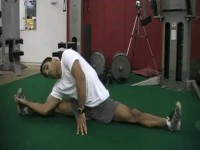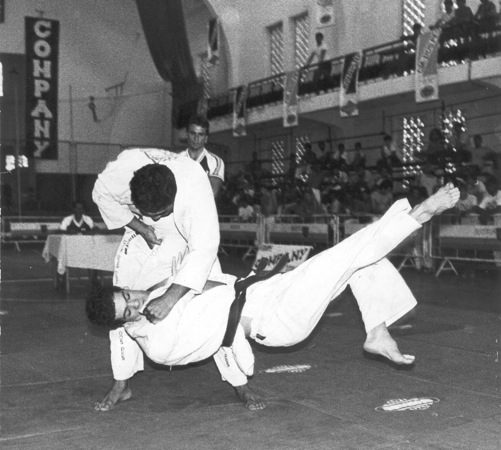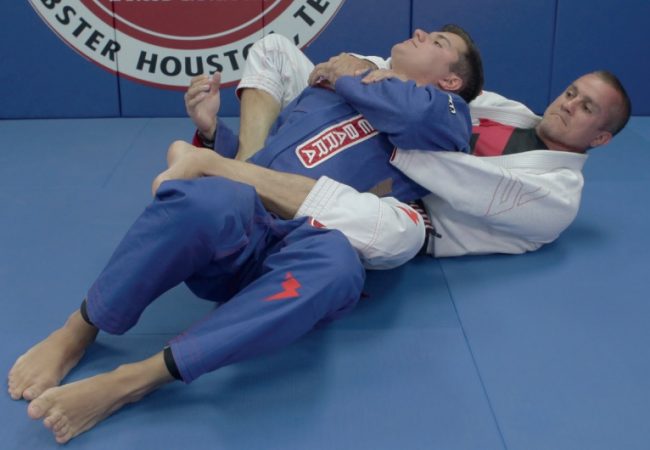
Patrick Gruban
[First published in 2010.]
One day, a curious teenage daughter asked her mother, “Mommy, why do you always cut off a third of the loaf of bread before baking it?” “Because that’s what you’re supposed to do,” responded the mom.
“I just don’t understand why you can’t bake the whole thing,” said the young girl. “Well, my mother is the one who taught me this. I’ll just call and ask her to settle this once and for all,” said Mom.
Ring-ring. “Hello,” says a voice on the other end. “Hi, Mom. It’s me, your daughter. I just wanted to know why you’re supposed to cut off a third of a loaf before baking it.” “Oh no, sweetie,” her mother chimes. “You’re not supposed to. I just always did that because our oven was too small and I couldn’t fit the whole loaf. I wish I didn’t have to waste all that bread.”
It’s easy to fall into the same trap the mother in the story fell into with your fitness and BJJ training program. A training partner passes along an exercise or nutrition tip. Then you pass it on to several others. Before long, the same tip gets circulated around the whole academy, so you figure it must be true. But training mistakes and half-truths could be stopping you from reaching your full potential. Here are the top 3 BJJ fitness mistakes and the truths that can help save your workout plan.
BJJ fitness mistake #1: Kettlebells (or any other tool) are the “secret” you’ve been waiting for.
Don’t get me wrong. I really enjoy training with kettlebells. They’re fun and are effective in many full body lifts. Kettlebell exercises also help develop grip strength, which is crucial for BJJ players.
The problem occurs when something that is simply a tool becomes the end-all, be-all. If someone tells you that their way of training is the only way to train effectively, run, don’t walk the other way. Don’t buy into it. This is nothing more than slick marketing. After all, if their way is the only way, then you have no choice but to buy their product, right?
Check out this quote that I read on Ross Enamait’s blog that I couldn’t agree more with:
Too many people in this world want you to believe that their way is the only way. Don’t buy into the nonsense. It simply isn’t true. There have been successful athletes who have engaged in an infinite number of training styles.
Almost anything that you do will work if you are passionate, diligent, and consistent with the work. Often times, it isn’t the individual workout that is most important, but how you attack the workout. How much passion and intensity do you apply to the work?
BJJ fitness mistake #2: If you want to get better at BJJ, work more on your strength and conditioning
The principle of specificity says that in order to get better at a sport or skill, you must perform that sport or skill. For example, if your goal is to increase your number of max pushups, then you need to work on pushups. Of course other exercises can supplement your training, but much of your training would need to be focused around the pushup.
The same goes for martial arts. I’ve been training BJJ for a long time and I don’t think it’s a coincidence that the best guys are usually the ones who spend the most time on the mat. Not everyone’s primary goal is to be a better martial artist, and that’s fine. But whatever your main goal is, that’s what you should be focusing on.
I once heard a yoga instructor tell someone who was interested in getting better at BJJ that they should do less BJJ and more yoga. I’m afraid if this person would’ve listened to this advice, the end result would’ve been someone who is better at yoga, not BJJ.
BJJ fitness mistake #3: Avoid running because it’s not sport-specific
I’ve seen a few “experts” over the last year or so recommend that their combat athletes remove running from their training. They claim that it won’t help with combat sports and the impact on your joints isn’t worth it.
While most strength and conditioning coaches aren’t taking such an extreme stance, many are only having their athletes perform sprints and no middle- or long-distance runs. The main problem I have with this is that aerobic training can help improve recovery time. Creatine phosphate (a high energy reserve) can be synthesized better in aerobically trained individuals than their aerobically challenged counterparts. Therefore some aerobic training can be beneficial to even a football lineman.
I do all types of running myself: long distances, hills, sprints, stairs — you name it. I run different patterns, including backwards and sideways. I try to mix it up and have fun with it. There are many benefits to different forms of running, including the following:
- Circulation — Your heart and lungs will improve their efficiency and deliver nutrients throughout your body more easily.
- Endurance — Even if you are training for a shorter event, longer runs will help you to have the endurance to handle the shorter, more intense workouts.
- Improved mental state — Running is a great way to organize your thoughts.
- Mental Toughness — Running is a great way to develop mental fortitude. Much of the time you’ll be by yourself when running, so it’s up to you to push yourself to go the extra mile.
- Fat loss — Running is an ideal way to burn some extra fat.
Of course running should be a part of the overall picture, and good form should be practiced. While there are some fighters that choose not to run for various reasons, there are many that do. For a great book about how humans are designed to run, read Born to Run by Christopher McDougall.
These are just a few of the mistakes people make in their BJJ fitness program. Think logically and critically when implementing something into your training program. Do your homework and find out whether the information is coming from a credible source. Doing a bit of extra work could help prevent you from making common BJJ fitness mistakes.
[Author: Billy Hofacker — Serra BJJ manager]
References:




